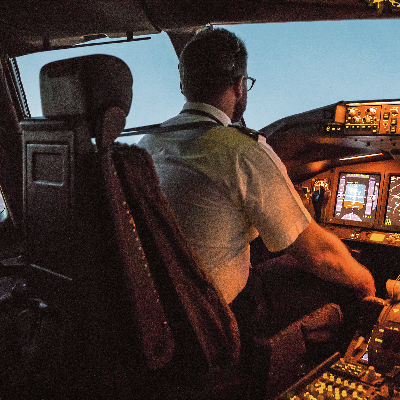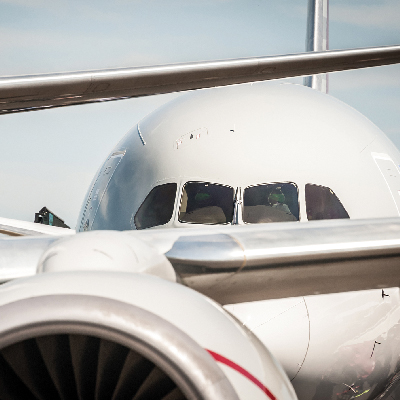By David A. Marcontell
This article first appeared in Forbes on November 1st, 2017.
Harking back to 1961 when President John F. Kennedy motivated a nation to land a human on the moon, the hallmark of the aerospace industry – and a significant source of its impressive safety record and financial success – has been the development and adoption of new technologies. Whether it’s the introduction of such systems as the Traffic Collision Avoidance System (TCAS) and predictive windshear-detection radar to help drive the number of accidents four times lower than three decades ago, or lighter structures and more fuel efficient engines to make aircraft 30% more cost effective, the industry loves “moonshots.”
So not surprisingly, when an aircraft manufacturer announces the development of game-changing technology, the entire industry and those that invest in it await the rollout with great anticipation. We push so hard for the new aircraft model to be finished that sometimes – often, in fact – the innovator feels compelled to make unrealistic promises about when it will be ready. When the aircraft doesn’t show up “on time” or exhibits teething problems on its initial entry into service, there is disappointment and criticism from the media, markets, and industry. Sometimes the harsh judgment is justified – but other times, people simply have unreasonable expectations.
One lesson to be learned is that innovation cannot be easily put on a schedule. It has its own glide path that it must follow to ensure a safe landing. That is certainly the thinking behind research projects funded by the Defense Advanced Research Projects Agency (DARPA). Facing no pressure from investors or customers, DARPA purposely chooses to explore breakthrough technologies – often across uncertain and even harsh operational environments – that require a lot of money and no expectation of coming to market on a schedule, if ever.
Allowed To Fail
But the for-profit world must also be allowed to take some of those risky bets occasionally, so commercial technology can evolve as well. While the venture capital markets are perhaps more accustomed to technology development risk, the capital markets – as well as the airlines and aircraft manufacturers – have a role in creating the environment for innovation to flourish.
New technology can differentiate an enterprise’s products and services from those of its competition; and it can lower operating costs and improve margins. But it does not come without risks. No single strategy alone will eliminate all of the jeopardy, but here are three lessons learned from successful – and unsuccessful – technology launches in aviation that provide guidance for other industries wrestling with innovation introduction:
- Start with soft launches. Emirates was the first airline to place an order for the A-380, but it made sure it wasn't the first to take delivery. This allowed its rivals time to take the new aircraft out for a spin and experience the inevitable glitches when a plane is tested under the rigors of day-to-day flight operations.
- Have experienced advisors. There is no substitute for having personnel in the field that know the new technology intimately. With the introduction of the SSJ-100 regional jet at Mexico City-based Interjet, Russian aircraft manufacturer Sukhoi deployed a large contingent of field service engineers, rather than the two or three typically sent by aircraft manufacturers when an airline takes on a new fleet type. This helped the airline achieve and maintain a 99.7% dispatch reliability during the initial 12 months of service period.
- Don’t over-hype the introduction or have too much riding on it. This includes resisting advice from marketing teams for a big splashy launch campaign or suggestions from senior executives to introduce new high profile routes or replace older equipment immediately in order to realize economic benefits sooner. Even though regional airlines SkyWest and Trans States Holdings placed early orders for Mitsubishi’s MRJ-90, both backstopped the purchase with orders for proven Embraer and Bombardier regional jets. With continued delays in MRJ deliveries, these airlines are looking pretty smart.
Recognizing the pitfalls as well as the rewards of innovation and the introduction of new technology are necessary if “moonshots” can continue to be possible.









